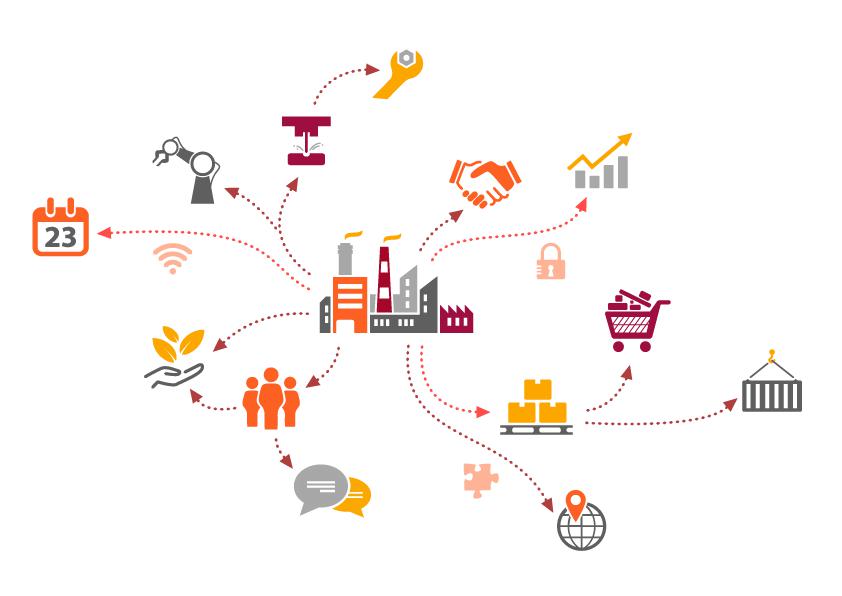Supply chain management (SCM) is the optimization of a product's creation and flow from raw material sourcing to production, logistics and delivery to the final customer.
SCM encompasses the integrated planning and execution of processes required to manage the movement of materials, information and financial capital in activities that broadly include demand planning, sourcing, production, inventory management and storage, transportation -- or logistics -- and returning excess or defective products. Supply chain management relies on both business strategy, specialized software and collaboration to work.
Because it's such an expansive, complex undertaking, each partner -- from suppliers to manufacturers and beyond -- must communicate and work together to create efficiencies, manage risk and adapt quickly to change.
In addition, supply chain sustainability -- which covers environmental, social and legal issues, in addition to sustainable procurement -- and the closely related concept of corporate social responsibility -- which evaluates a company's effect on the environment and social well-being -- are areas of major concern for today's companies.
This article is part of
Guide to supply chain management
Download1Download this entire guide for FREE now!
Benefits of supply chain management
Supply chain management creates a number of benefits that translate to higher profits, better brand image and greater competitive advantage. These include the following:

Five stages of supply chain management
Supply chain management can be broadly categorized into five steps or areas:
Plan. Using supply chain analytics and materials management features in ERP systems, organizations create strategic plans to meet customer demand for product and avoid a bullwhip effect.
Source. Organizations identify and select vendors that can supply materials in a streamlined and efficient way according to agreements. Supply chain collaboration starts at this stage and is important throughout the supply chain management process.
Make. In this stage, products are manufactured. It includes scheduling the production, testing, ensuring compliance requirements are followed, packing, storage and release. Multiple machines are likely to be involved, especially for larger companies, and these increasingly use technologies such as IoT and AI to work more efficiently.
Deliver. The delivery stage pertains to logistics and focuses on getting finished goods to consumers, in whatever manner of transportation is needed. As the Amazon effect has grown, especially as a result COVID-19, more focus is on doorstep delivery. Greater emphasis is now also on supply chain leaders working more closely with customer service. Inventory management and warehouse management systems are especially crucial at this stage.
Return. The return stage includes all product returns, including defective products and products that will no longer be supported. This stage also includes elements from other stages, including inventory and transportation management.
Example of SCM
The most basic version of a supply chain includes a company, its suppliers and the customers of that company. An example would be: raw material producer, manufacturer, distributor, retailer and retail customer.
Most supply chains are far more complex and layered. This is why examples of unsuccessful supply chain management, where risk is not managed or disruption occurs, can be so helpful.
Food shortages due to COVID-19 are a good example of supply chain management gone awry. The food supply chain was disrupted in a number of ways. For example, many restaurants and schools closed to accommodate stay-at-home orders, causing products meant to go to institutional settings in bulk to no longer be needed. Instead, an exponential number of consumers were eating at home, which had different packaging requirements, among other issues. The meat industry also ran into supply chain management disruptions due to issues such as COVID-19 outbreaks in slaughterhouses.
The role of supply chain management software
Technology is critical in managing today's supply chains, and ERP vendors offer modules that focus on key functions within SCM. There are also business software vendors that focus specifically on SCM. A few important areas to note include the following:
Infor, Blue Yonder (formerly JDA Software), Manhattan Associates, Oracle and SAP are well-known vendors of supply chain software.
The increasingly global nature of today's supply chains and the rise of e-commerce, with its focus on nearly instant small deliveries straight to consumers, are posing challenges, particularly in the area of logistics and demand planning. A number of strategies -- such as lean manufacturing -- and newer approaches -- such as demand-driven material requirements planning -- may prove helpful.
Technology -- especially big data, predictive analytics, IoT technology, supply chain analytics, robotics and autonomous vehicles -- is also being used to help solve modern challenges, including in the areas of supply chain risk and disruption and supply chain sustainability.
As just two examples, IoT can help with transparency and traceability to help boost food quality and safety by using sensors to monitor the temperature of perishable food while it's in transit. And analytics can help determine where to put smart lockers in densely populated areas to cut the number of single-item deliveries and lower greenhouse gas emissions.




